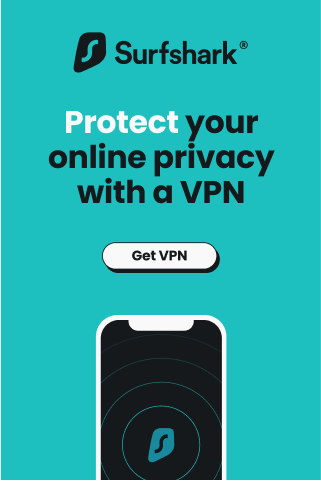
Detecting Keyloggers – What to Know About this Hidden Menace
Detecting Keyloggers: What Exactly Is a Keylogger?
Before going into the central issue of detecting keyloggers, it only makes sense to describe what a keylogger is for our readers.
A keylogger, also identified a keystroke logger or a keyboard capturer, is software or hardware that monitors and records your keyboard input.
Keyloggers were initially employed for legal reasons. They were used for computer maintenance, monitoring staff activities, and assessing how users interact with apps to optimize the user experience.
However, hackers and criminals have taken advantage of them to acquire secure information such as usernames, passcodes, bank account information, and other confidential information.
In most situations, a keylogger is unintentionally installed with legitimate software. Consequently, most users are unaware that their keystrokes are being logged.
When a keylogger trojan infects a user’s computer, the malicious software typically records their keystrokes and stores the data in their computer’s local storage. The stored data will be extracted later by the hacker. As a result, keyloggers pose a substantial threat to computer security and data privacy, necessitating detecting keyloggers and eliminating them.
Detecting Keyloggers: What Is the Purpose of a Keylogger?
The fundamental function of a keylogger is to capture what you type and, in some way, feed that information back to whoever installed it on your computer.
Because many of your interactions with your computer—and with the people you interact with—are mediated through your keyboard, the snooper may gain a wide range of information, from passwords and banking information to intimate correspondence.
Many keyloggers go beyond merely logging keystrokes and text to snoop in various ways. Keyloggers with advanced capabilities may be able to:
*Record clipboard text and information copied from other documents.
*Keep track of activity like folder, document, and the application opens.
*At random intervals, take and save screenshots.
*Request the text value of various on-screen controls, which can help with password recovery.
Keyloggers Are Divided into Four Types Based on How They Work

API-based
These keyloggers, also known as application programming interfaces (APIs), let the software communicate with the hardware. API-based keyloggers intercept all input from the keyboard sent to the app. you’re using. It is logged every time a user presses or releases a key. Instead of malware, this type of keylogger collects keyboard events as if they were a regular application function.
Form grabbing-based
Keyloggers that capture online form submissions record the data input when the form is submitted. When users submit a completed form, their information is gathered before it is communicated over the internet, frequently by clicking a button or pressing enter.
Kernel-based
These keyloggers enter a system’s core and get administrative rights. These loggers have unrestricted access to all data entered into a computer system.
Javascript-based
A malicious script tag is included on a web page and listens for keystrokes. Scripts can be injected by various methods, including cross-site scripting, man-in-the-browser, and man-in-the-middle attacks, or when a website’s security is hacked.
How Do Keyloggers Get into Computers?
They usually infect PCs that have outdated antivirus software or no antivirus protection.
You should be conscious of the following scenarios:
1. Keyloggers may be installed via web page scripts. Hackers use web browser weaknesses to insert malicious code into a webpage, which silently performs the installation or data hijacking.
2. Phishing: Keyloggers are installed when users click on a fraudulent link or open a malicious attachment in a phishing email.
3. Social Engineering: Some criminals use psychological manipulation to mislead unsuspecting individuals into installing a keylogger by creating a sense of fear, urgency or concern.
4. Unauthorized software downloaded via the internet: Unauthorized developers’ apps or cracked software may invisibly install a keylogger on a computer system.
Regardless of the circumstance, detecting keyloggers and eliminating this menace becomes the main priority for owners of infected devices.
Do Keyloggers Get into Mobile Devices?
There are no hardware keyloggers for mobile phones that are known to exist. Both Android and iPhones, however, are vulnerable to software keyloggers.
Some say that keylogging is difficult since the screen of a mobile device acts as a virtual keyboard for input. However, searching for smartphone keyloggers online will disclose how many are available for download.
Furthermore, once infecting a mobile device, the keylogger tracks more than just keyboard activity. Screenshots (of emails, messages, login pages, and so on), the phone’s camera, microphone, attached printers, and network traffic are all fair game, necessitating the need for detecting keyloggers and removing them. A keylogger’s existence might even block you from visiting specified websites.
Regarding infection methods, anyone with temporary illegal access to the phone can install a keylogger. Furthermore, smartphone users, like PC and Mac laptops, tablets, and desktops, might become infected if they fall prey to phishing schemes or unwisely click on an attachment of unknown origin.
How Dangerous Are Keyloggers?

A keylogger can help hackers obtain your login passwords, bank account information, credit card numbers, and other sensitive information (sexual orientation, political beliefs, childhood trauma, psychological problems, medication, etc.).
If this happens, a cybercriminal may:
• Empty your financial records.
• Use all of your credit cards, causing your credit score to plummet.
• Online, pose as yourself.
• Use knowledge of your personal information to blackmail you.
Detecting Keyloggers: Ten Ways to Find Out if You Have a Keylogger
If you notice any of these symptoms, your device may have been infected with a keylogger.
1. You receive unusual error messages while entering specific characters or numbers, or an unexpected pop-up window appears.
For example, “Error: This file has an unexpected end of input.” If you don’t recall downloading anything related to the problem, a keylogger is most likely at work.
2. You’re seeing ads for your most frequently used search keywords and websites, despite not having entered anything related into the search field or visited those websites in months.
If you frequently buy clothing online and notice an advertisement for one of your favorite retailers on another site, a keylogger may be at work.
3. You’re having trouble connecting to or entering secure websites, particularly financial institutions and social networking sites such as Pinterest or Instagram.
In the event, you remain unable to access the site after using multiple browsers and clearing caches, cookies, history lists, and browsing data, a keylogger may be at work.
4. Infections are discovered after your computer has been connected to the internet for an extended period, even if it was clean when you turned it off and verified it with the AV application before restarting.
This is due to the fact many types of malware are designed to remain dormant until a certain amount of time has passed. They will now awaken and begin transmitting data.
5. Your computer is unusually slow. If your computer has been noticeably slow for an extended period, but you haven’t installed anything new in the last few days, a keylogger could be at work.
6. Changing your password history without your knowledge is a tell-tale sign of keyloggers at work.
7. Someone used your login information to gain unauthorized access to another website you were not using.
8. The same person accessed multiple sites using different usernames and passwords.
9. You discover unusual network activity or dubious URLs in your browsing history.
10. Keyboard shortcuts aren’t working correctly.
It’s critical to understand that just because you can’t find evidence of keylogger detection doesn’t mean one doesn’t exist. It could simply be that it is well hidden, and you have yet to discover it. Moreover, many users believe that they must be safe because no malware application is discovered during scans.
This assumption, however, is only valid if you scan your machine and update it frequently. Malware developers update their code regularly, which means new versions of current infections do not always trigger detecting keyloggers on your device.
Detecting Keyloggers: How to Protect Yourself from Keyloggers

The following is a list of things you should do:
Setup Antivirus Software
Keyloggers are malware, at least when used by hackers against you. Antivirus software is the most effective line of defense.. Antivirus software includes security programs designed to protect your device from malware attacks.
Run regular scans (ideally daily) and keep your antivirus software updated. If you do not update, it may be unable to detect new malware strains (including detecting keyloggers).
Note: Please remember that antivirus and antimalware software are the same things. A virus, after all, is a type of malware. As a result, keyloggers should be prevented by antivirus and antimalware software.
Configure 2FA/MFA for all of your accounts.
MFA is an abbreviation for Multi-Factor Authentication, whereas 2FA is an abbreviation for Two-Factor Authentication. These are security settings that necessitate an extra step during the login process.
When you log in, you will typically enter your username/email and password as usual. You must then enter a randomly generated code to complete the login process. The code is frequently generated on your phone using an app (like Google Authenticator).
Even if fraudsters use keyloggers to obtain your login credentials, they will be unable to access your accounts. To do so, they would need direct access to your mobile device.
Please keep in mind that if the website you’re using does not support 2FA/MFA, we recommend switching to one that does. If you don’t, your account will always be vulnerable to keyloggers or data breaches.
Utilize Password Managers.
A password manager is a web-based service that keeps track of all your passwords in one place. It encrypts them and acts as a digital vault. You only need one master password to access and use them.
Password managers, with their auto-fill functionality, should protect against keyloggers. In essence, you save websites you visit in your password vault and then use a browser extension to fill out the login fields when you visit them. There’s no need to type anything.
But won’t keyloggers compromise your master password, giving hackers full access to all of your passwords?
That is why you should always keep 2FA/MFA enabled on your account (like we already said).
Also, rather than inputting your master password into the webpage, simply copy-pasting it. This entails saving it as a text file, encrypting it, and storing it on an airtight device or USB flash drive (no access to the web or connected to any network).
Note: Password managers frequently provide adequate protection against hardware keyloggers. They work against some software keyloggers but not all. Remember that some of them are designed to steal your master password by taking screenshots (alongside other data).
A password manager is designed to provide a level of security rather than complete protection. Although it can protect your data from some keyloggers, this does not mean you should ignore potential malware infestations on your device.
Employ Script Blockers.
These solutions are ideal for protecting yourself from hackers who use malicious programs that look like keyloggers. Or marketers who use intrusive scripts to track what you type into their websites or how you interact with their ads and text.
By far, the most effective tool for the job is Umatrix. It’s open-source, free, and works with most browsers. Yes, it’s a little complicated, but it can keep you safe from malicious background scripts.
We also advise you to use uBlock Origin. It primarily blocks advertisements but can also be configured to block scripts. If you use Firefox, you will also be unable to run cloaked first-party scripts. Furthermore, remember that hackers can use malicious advertisements to infect your device with keyloggers.
Make use of a VPN.
A VPN will not keep you safe from keyloggers (or any malware). However, blocking access to malicious websites can prevent hackers from infecting your device with keyloggers.
VPNs may also prevent attackers from redirecting you to phishing sites via Man in the Middle attacks. A VPN encrypts your traffic, making it impossible for hackers to monitor your data packets and see which websites you visit.
Unless you provide that information, they cannot redirect you to bogus sites infested with keyloggers.
For example, you’d be suspicious if you went to google.com and were redirected to a PayPal-looking site asking for your login information. You might even double-check the URL and find it is paipaI.xy.com rather than paypal.com.
So, whenever you go online, use a VPN at the very least when logging into accounts or making online payments.
We can assist you in selecting a reliable VPN. Here’s a link to the best VPN available, click here.
Maintain Current Software
Keyloggers are frequently implanted into devices by cybercriminals that are using obsolete programs and operating systems. Potential vulnerabilities will go unnoticed if you do not upgrade your programs or operating system.
So, as inconvenient as updates (mainly Windows updates) may be, simply accept them. It is preferable to wait 10 minutes for upgrades to complete rather than have a hacker gain access to your accounts because your filesharing client is still running an outdated version.
Use Your Common Sense
What we mean is as follows:
*Forgo downloading files from suspicious websites, especially if the program is advertised as free when it is quite expensive (like Adobe Photoshop).
*Do not respond to emails from unknown senders; scammers may have sent them malicious URLs or files infected with keyloggers.
*Leave immediately if you go to one website and are redirected to another. Don’t waste your time on it; avoid clicking any links or advertisements.
*If you ever get a random pop-up saying you won a new smartphone (or any other item or amount of money), ignore it and leave the site. It’s either a malicious bogus website or hackers have infiltrated a legitimate website.
*Always double-check public computers. Look for any extraneous devices connecting the keyboard cord and the computer’s USB port. Avoid doing anything important on public computers (like online banking, making payments, or checking your email).
Our Top Pick for Keylogger Detection and Removal on Macs and PCs
Keyloggers represent one of the most dangerous types of malware, as we have repeatedly stated throughout this article.
These activity-monitoring software packages give hackers access to your personal data by capturing your keyword strokes. Your data becomes highly vulnerable, exposing your user names, passwords, financial information, and even your device’s memory to theft.
You need the most powerful keylogger protection on your business and home PCs. As a result, we wholeheartedly recommend Sophos Home for complete keylogger protection.
Sophos Home is designed to do just that: secure your sensitive information with cutting-edge technology and guard your data from malicious attacks.
Traditional keylogger detection looks for “signatures,” but it frequently misses new malware variants created by criminals to avoid detection.
The sophisticated artificial intelligence in Sophos Home Premium detects suspicious behavior in applications. It then detects and eliminates keylogger malware, including previously unknown variants.
Sophos Home Premium provides the most robust computer protection to protect your home PCs from keyloggers and other sophisticated threats.
Sophos Home Premium Protects Against Keyloggers By Using:
Award-Winning Malware Removal
Sophos now provides the exact sophisticated keylogger security solutions that protect over 500 million business devices around the world.
Security for Windows and Mac Devices
Mac users once believed they were immune to viruses. Not anymore. Keylogger malware can infect Macs as well. Protect your home computers with a high level of security on which you can rely.
Small File Size
Sophos Home remains active after the initial thorough scan and cleanup process are completed to keep you secure. It takes up so little space, however, that it is barely noticeable—all that security in a small package.
Anywhere Access
Are you the primary IT contact for your entire family? We completely understand how you feel. Remotely protect your parents’ computers with Sophos Home before they open a phishing email or become a victim of a malware attack.
On-Demand Scanning
Do you have a strong inclination that you have been infected? Allow Sophos to look into it. You can conduct a scan at any time to remove hidden malware that was not detected by your computer’s routine scans.
Web and Social Media Blockers
Sophos Home makes it simple to select and limit categories based on device, closing security gaps in your home network.
Bottom Line: Avoid keyloggers at all costs.
Sophos Home quickly detects keyloggers by leveraging cybersecurity technologies similar to those in Sophos business endpoint protection, such as behavioral detection, enhanced exploit prevention, and artificial intelligence.
To detect dangerous downloads and hidden keylogger malware, Sophos Home scans downloaded applications and analyzes data from suspicious websites and servers.
Furthermore, Sophos Home protects your data from malware by encrypting your keystrokes and blocking harmful phishing sites. It performs as a buffer between you and insecure web browsers wherever you go.
Click here to learn more about all of the security features offered by Sophos Home.
The Post: Detecting Keyloggers – What to Know About this Hidden Menace was first seen on https://websecurityhome.com
This Post is Brought To You By:








